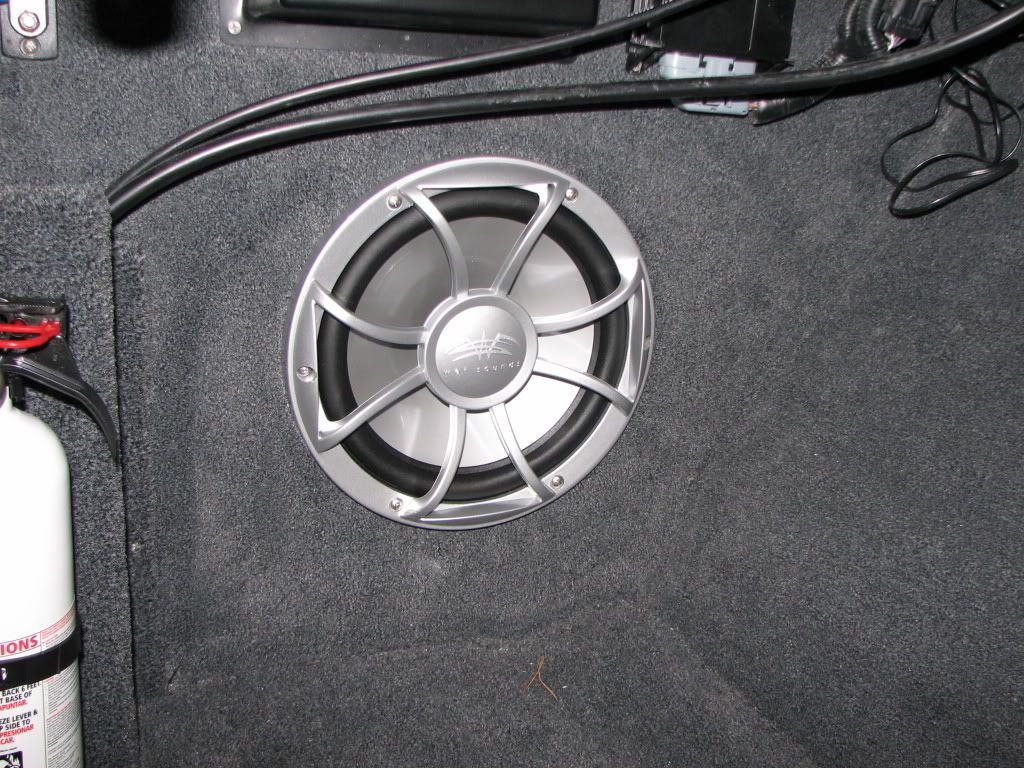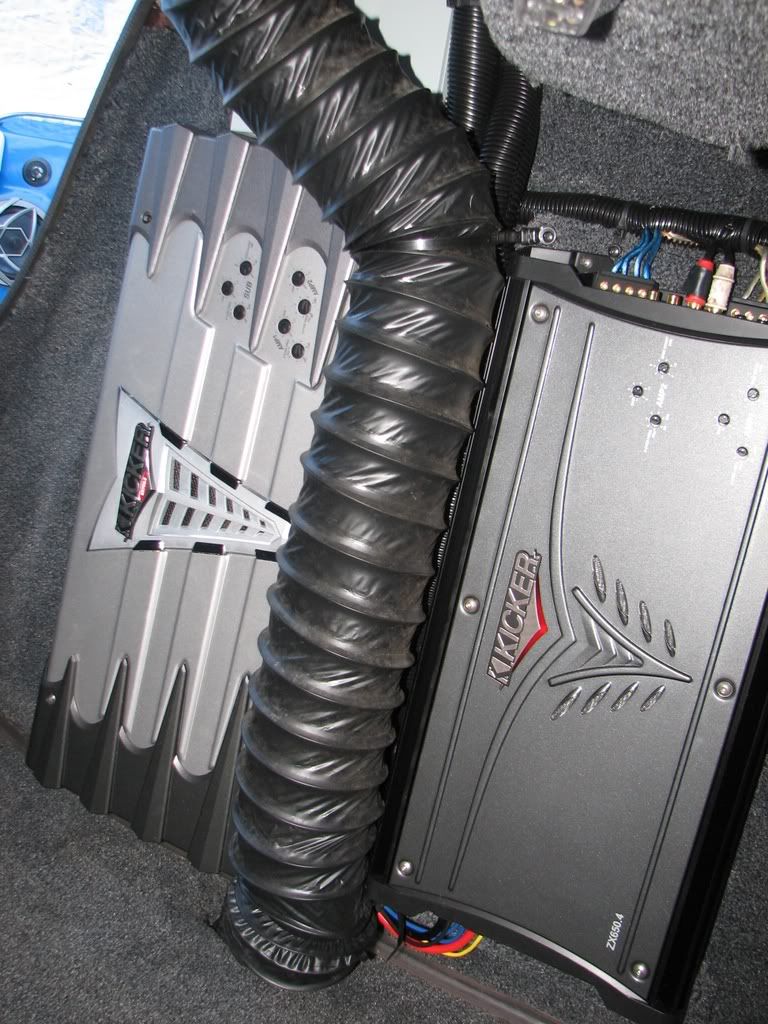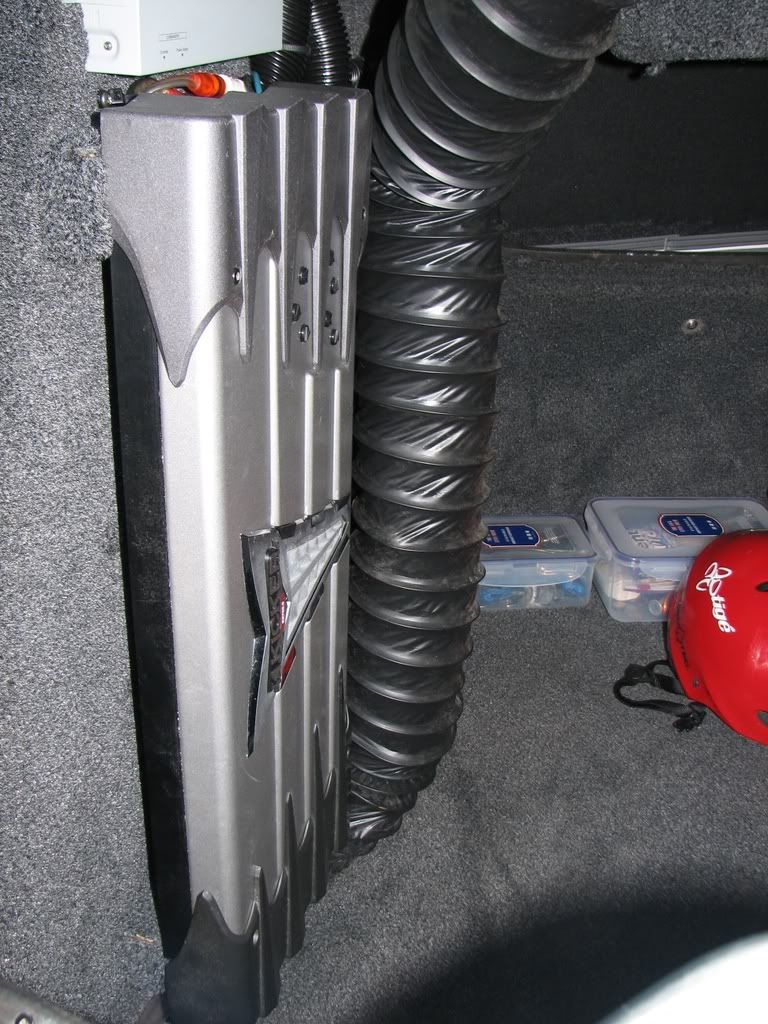I am a trying to install a new stereo system in my boat. Though I am familiar with home entertainment systems, this is the first time I have installed amps in a car or boat.
I have three amps, a capacitor and a sub to mount.
I was thinking of putting the amps under the "dash" in front of the passenger seat. There is a fair amount of space that is way back and up behind the glove box (and the head unit).
And, I was thinking of putting the sub (it is a free-air sub) up by the drivers feet (kickboard or preferably even higher). I would possibly still enclose the sub depending on how it mounts and sounds.
My question is this....I have heard that the amps should not be within three feet of the head unit, so that would not allow me to put the amps where I was thinking.
And, I have heard that it is not a good idea to place a sub by the gauges, so I am not sure if this is a good location either.
I also heard that placing the sub by the head unit can cause the CD to skip, so I don't know if moving the sub to the other side would even work ?
?
I would really like to use the space that is basically wasted in those areas rather than mounting the amps in the engine compartment. These areas will also be much drier than the engine compartment - I am not opposed to adding a fan if I need to.
Any thoughts? Any other ideas? Do I really need to worry about this?? Three amps up there will be tight, any space savings suggestions if this will work?
Also, is it better to reduce the length of power and ground cables or the RCA patch and speaker cables?? This may also determine where everything gets mounted. I don't mind spending a little more money for better (or longer cables) if I can save storage space without sacrificing sound quality.
Thanks!!
I have three amps, a capacitor and a sub to mount.
I was thinking of putting the amps under the "dash" in front of the passenger seat. There is a fair amount of space that is way back and up behind the glove box (and the head unit).
And, I was thinking of putting the sub (it is a free-air sub) up by the drivers feet (kickboard or preferably even higher). I would possibly still enclose the sub depending on how it mounts and sounds.
My question is this....I have heard that the amps should not be within three feet of the head unit, so that would not allow me to put the amps where I was thinking.
And, I have heard that it is not a good idea to place a sub by the gauges, so I am not sure if this is a good location either.
I also heard that placing the sub by the head unit can cause the CD to skip, so I don't know if moving the sub to the other side would even work
 ?
? I would really like to use the space that is basically wasted in those areas rather than mounting the amps in the engine compartment. These areas will also be much drier than the engine compartment - I am not opposed to adding a fan if I need to.
Any thoughts? Any other ideas? Do I really need to worry about this?? Three amps up there will be tight, any space savings suggestions if this will work?
Also, is it better to reduce the length of power and ground cables or the RCA patch and speaker cables?? This may also determine where everything gets mounted. I don't mind spending a little more money for better (or longer cables) if I can save storage space without sacrificing sound quality.
Thanks!!








 Sell it to the next guy who thinks they do something and take the money and invest in batteries; depending on the deals you find, you might be able to buy TWO batteries for what you gave for the cap...
Sell it to the next guy who thinks they do something and take the money and invest in batteries; depending on the deals you find, you might be able to buy TWO batteries for what you gave for the cap...
Comment